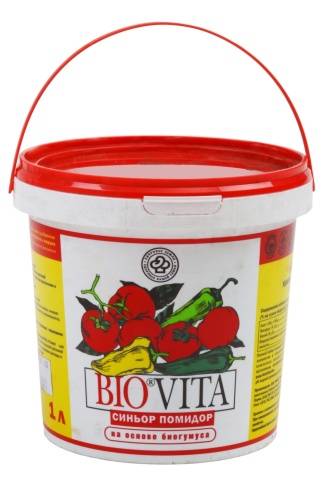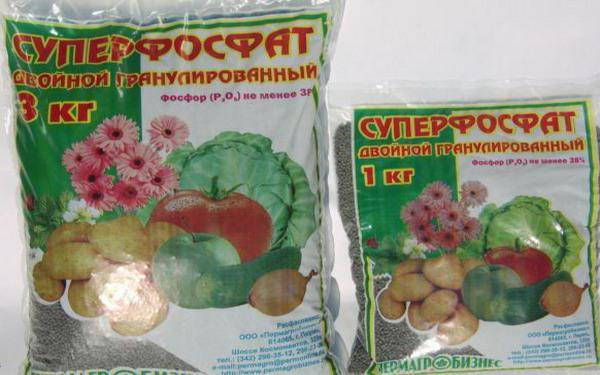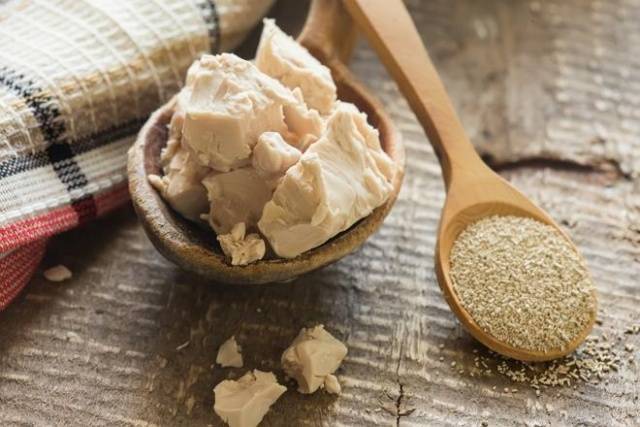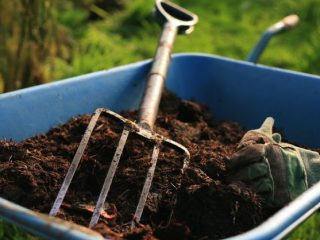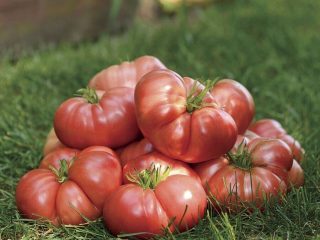Content
Growing tomato seedlings in recent years has turned from a simple hobby into an urgent necessity for many, since, on the one hand, you can’t always find seedlings of the exact variety of tomato you want to grow on the market, and on the other hand, their quality often leaves much to be desired.
But growing good, strong tomato seedlings is not an easy task, especially in city apartments. Very often, especially beginning gardeners, they are faced with the fact that seedlings grow thin, frail, and stretch out greatly. What to do? And many come to the decision that it is necessary to feed it, and begin to do this often and in disproportionate quantities. But feeding tomato seedlings is a very delicate matter, and it is easier to do harm than to help. Before you do anything, you need to figure out when, how and what is the best way to feed tomato seedlings, and whether it needs to be done at all.
When feeding is not needed
If you planted tomato seeds in soil that you made yourself according to a proven recipe or in specialized, purchased soil of good quality from a reliable manufacturer, then most likely there is no need to think about how to feed the tomato seedlings before planting them in the soil of a greenhouse or in a garden bed. It will have enough nutrients that were contained in the soil for good growth. Especially if, when picking, you changed the soil to a more nutritious one, and also added a spoonful of some organic fertilizer to each individual pot.
In most cases, it is precisely because of the violation of the conditions of keeping the seedlings that their appearance is far from perfect. What exactly influences the growth and development of tomato seedlings the most?
There are three main factors that most gardeners, of course, know about, but for some reason they act based on their purely human ideas about what is better and what is worse, and not from what the plants really need, in this case, tomato seedlings .
Sunlight comes first. Or at least artificial light. But there must be a lot or a lot of it.
In the future, tomato seedlings simply need an overnight rest, otherwise there will really be problems with chlorosis on the leaves.Without a sufficient amount of light, the seedlings will be thin and elongated, and fertilizers are unlikely to help, except perhaps special means, such as immunostimulants (Epin, Zircon), which help plants survive unfavorable conditions.
In second place is temperature. The most common mistake, especially for novice gardeners, is that they continue to keep tomato seedlings after germination at the same rather high temperature as during seed germination. And if there is still little light, then such seedlings will never look thick and strong.
The secret to forming good roots and further rapid development is to reduce temperature of keeping tomato seedlings immediately after emergence by 5-6 degrees during the day, and by 8-10 degrees at night. The difference between day and night temperatures is also very desirable. This regime must be maintained for several weeks, until the first picking of tomato seedlings. In principle, there will be nothing terrible if this period occurs in sunny weather, when during the day on a sunny window the temperature cannot be lowered. Sunlight will make up for all this. And at night in this case, keeping the seedlings cool is all the more desirable.
The third factor is soil moisture or watering. The most common mistake here is overwatering tomato seedlings in the first days, weeks and even months of its life. Not only that, overwatering is the most common cause of seedling death from the so-called black leg. If she still managed to survive, but the overwatering continues, the leaves may begin to turn yellow.
And inexperienced gardeners may decide that the seedlings are starving and begin to urgently feed them. It is necessary to water tomatoes only when the top layer of soil is thoroughly dry.
It should also be noted that fertilizers for tomato seedlings are not needed until the first true leaves open, and this usually coincides with the first picking.
Symptoms of starvation of tomato seedlings
Before you figure out what types of fertilizers exist for feeding tomato seedlings, as well as when and how they should be used, you need to pay attention to the appearance of the plants. Usually, the condition of the leaves and stems already tells you what the tomatoes need (or don’t need) in the first place.
- If the seedlings look dull, and the lower leaves turn yellow and begin to fall off, there is a lack of nitrogen. It is this element that the plant can independently transfer from less necessary areas (lower leaves) to more necessary ones (upper leaves), in which intensive growth occurs.
But it is also very important not to overdo it with nitrogen fertilization. Indeed, in the best case, the seedlings will look great with thick stems and fat and beautiful leaves, but they will bear fruit very weakly, and it is better not to count on a large harvest. And in the worst case, seedlings planted in the ground overfed with nitrogen will be attacked by many diseases and may even die, since overfeeding with nitrogen greatly weakens the plant’s immunity. By the way, symptoms of severe overfeeding with nitrogen at the seedling stage are curling of young leaves and their fragility. - Flaw phosphorus probably familiar to many.The seedlings turn purple, primarily on the undersides of the leaves, on the stems or the veins on the leaves. The appearance of a purple hue is also a known sign that the tomato roots are cold. But these are all links in one chain; due to the cold, the roots cannot absorb phosphorus.
- Potassium deficiency is rare in seedlings before planting in the ground, but it manifests itself in the fact that the upper leaves become curly or wrinkled, and on the lower leaves along the edges, starting from the tips of the leaves, a light stripe appears, which then turns black and the leaf dries out.
- Iron deficiency (chlorosis) can occur precisely among those gardeners who believe that the more light, the better, and for a long time illuminate their seedlings around the clock. Namely, at night, in the dark, the accumulated nutrients are processed and absorbed. Chlorosis manifests itself in yellowing, or rather whitening of the leaf, while the veins remain green. Usually starts from the upper leaves.
- A lack of magnesium also manifests itself in chlorosis, but unlike the signs of iron deficiency, the color of the leaves turns from yellow to a darker, reddish or purple hue. The veins also remain green. Another difference is that chlorosis due to magnesium deficiency begins with the lower leaves.
- A lack of boron may begin to appear at the flowering stage, with fruits not setting well and the ovaries falling off.
- Calcium deficiency also rarely appears on seedlings; it leads already at the fruiting stage to the appearance of tomatoes with blossom end rot (gray or brown top). Often it is excessive doses of nitrogen that lead to calcium deficiency, as they interfere with its absorption.
Lack of other microelements practically does not occur in seedlings and can only occur in developed fruit-bearing tomatoes.
Fertilizers: which ones to use and when
When asking the question “How to feed tomato seedlings so that they are plump and strong?”, it is necessary to take into account all the above factors. If the condition of the seedlings still worries you, then you need to understand that several types of fertilizers are used to feed tomatoes, which will be discussed below.
Mineral fertilizers
Mineral fertilizers There are one, two, three components or complex, that is, containing all three main macroelements: nitrogen, phosphorus, potassium and many microelements.
If you don’t know how to feed tomato seedlings, but definitely want to do it, then it’s best to use complex fertilizers. They have everything that tomatoes need, and there is no need to think about additional feeding. Complete fertilizers come in three types: liquid, granules, and water-soluble powder or granules.
Fertilizers of the first type are the most convenient to use, but often the most expensive. The most popular among gardeners are Effecton, Uniflor Rost, Gumi Kuznetsova, Agricola and Ideal. Some (Effecton, Gumi Kuznetsova) also contain humic acids, which increase plant immunity and have a beneficial effect on root growth.
Water-soluble granules or powder are quite easily diluted in water, and this ready-made solution is used for glaze seedlings. The most popular fertilizers of this type are Kemira-Lux, Mortar, Strong.
Conventional granules are used when transplanting seedlings or preparing a soil mixture. They are mixed with soil to planting tomatoes and their action is usually more prolonged than that of similar liquid fertilizers. The most famous fertilizers of this type are Universal and Senor-Tomato. If you want to use these fertilizers as additional fertilizing, this can be done by mixing them with water, but you need to take into account that they take quite a long time to dissolve, several hours.
When choosing a specific fertilizer, keep in mind that the most optimal ratio of the main macroelements in a complex fertilizer for tomato seedlings should be approximately the following: 25% nitrogen, 35% phosphorus and 40% potassium.
If it turns out that the seedlings lack a certain element, then you must definitely use a one-component fertilizer for feeding tomatoes.
If there is a lack of nitrogen, use a solution of urea or ammonium nitrate. Dilute two grams in 5 liters of water.
To compensate for phosphorus deficiency, use a superphosphate solution. 16 grams are dissolved in 5 liters of water.
If there is a lack of potassium, use a solution of potassium sulfate: 6 grams per 5 liters of water.
To replenish phosphorus and potassium, it is very effective to use a solution of wood ash. To prepare it, 5 tablespoons of pre-sifted ash are dissolved in 5 liters of water. Leave for 3-5 days.
Organic fertilizers
The main types of organic fertilizers include the following:
- Manure;
- Bird droppings;
- Humus;
- Compost;
- Sawdust;
- Peat;
- Vermicompost.
The vast majority of these types of fertilizers are largely intended for growing mature plants in greenhouses and open ground. Only vermicompost is ideal for feeding seedlings, which is also often sold packaged in liquid form, making it as convenient as possible for use.
Folk remedies for feeding tomato seedlings
Have you thought about how to feed tomato seedlings? But for this you can use the simplest means that any housewife has at her disposal, but many simply thoughtlessly throw them away, not knowing what benefits they can bring.
For example, banana peels are a real source of potassium, which is what tomatoes need most among the macronutrients. To prepare a valuable fertilizer for your tomato seedlings, you need to place the peels of several bananas in a three-liter jar with warm water, leave for 3 days, strain and water the plants with the resulting liquid once a week.
Eggshells are an excellent source of calcium and some trace elements. The shells of 3-4 eggs must be crushed, then soaked in 3 liters of warm water. Cover loosely with a lid and place in the dark for 3 days. When the solution becomes cloudy and an unpleasant odor appears (hydrogen sulfide is released), you can water the tomato seedlings with it.
Lovers coffee They will certainly appreciate feeding the seedlings with coffee grounds. It is usually mixed with soil when transplanting seedlings into new containers. Coffee grounds act as a leavening agent and also enrich the soil with microelements.
An infusion of onion peels plays the role of a pest repellent rather than a fertilizer. However, soak 10 g of husk in 1 liter of water and leave for 5 days. You can water the seedlings with this solution.
The use of iodine helps speed up the ripening of fruits and is also a good preventative against late blight. You can use a pure iodine solution - dissolve 3 ml of a regular alcohol solution of iodine in 10 liters of water. But it will be more effective to use an iodine solution together with serum. To do this, 1 liter of whey is mixed with 9 liters of water, 20 drops of iodine are added to the resulting solution, and mixed well. This solution is good for spraying both seedlings and adult tomato bushes in open ground.
Finally, ordinary plants can be used as a growth stimulator for seedlings. yeast. Both fresh and dry are suitable. To do this, dissolve 100 g of fresh yeast well in 10 liters of water and immediately pour the resulting liquid over the seedlings. For dry yeast there is a slightly different method of use. One sachet should be mixed with 2 tablespoons of sugar, add a little warm water, stir, and dissolve the resulting mixture in 10 liters of water.
General recommendations for feeding tomato seedlings
Now you know what you can use to fertilize tomato seedlings and you can choose the most convenient fertilizer for you. It remains to tell you when and how best to fertilize.
By this time, the tomatoes should have opened several true leaves. At this point, it is best to use a complex fertilizer containing the main elements in approximately equal doses.In the future, if there are no obvious signs of starvation, which were discussed above, it is better to feed little by little, but more often. For example, once a week, water the seedlings with 1/2 the dose recommended in the instructions for any complex fertilizer. You definitely won’t do any harm with this feeding, and the tomatoes will get everything they need.
It is necessary to understand that seedlings can be fed only on moist soil, in order to avoid burns to the root system. Therefore, on the day of feeding, tomatoes must be watered several hours before the procedure. If the soil is moist, then pre-watering is not required.
The ideal time for both watering and feeding seedlings is in the morning, so that on sunny days you don’t get burned by drops on the leaves, and on cloudy days, the plants have time to absorb moisture before the cold night sets in.
Thus, if you combine the creation of favorable conditions for growth and development of seedlings tomatoes with its feeding, you will certainly get a rich harvest of tasty and healthy tomatoes.










